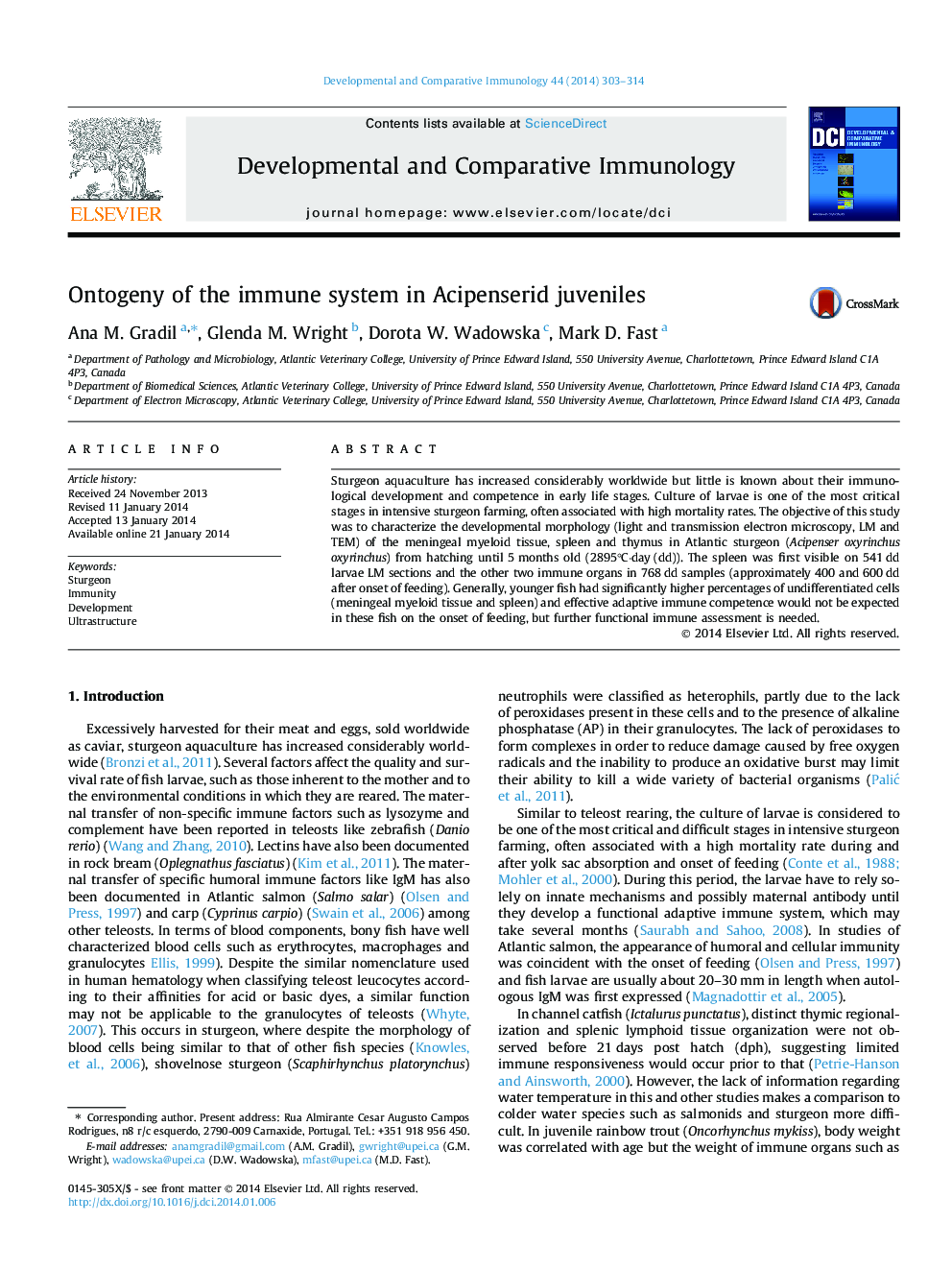| Article ID | Journal | Published Year | Pages | File Type |
|---|---|---|---|---|
| 2429204 | Developmental & Comparative Immunology | 2014 | 12 Pages |
•Morphological development was studied in relevant sturgeon immune organs.•The meningeal lymphoid tissue, spleen and thymus were studied in Atlantic sturgeon.•The immune organs studied appeared between 541 degree days (dd) and 768 dd.•These organs appeared around 400–600 dd after the onset of feeding.•Effective immunity is not expected in these fish on the onset of feeding.
Sturgeon aquaculture has increased considerably worldwide but little is known about their immunological development and competence in early life stages. Culture of larvae is one of the most critical stages in intensive sturgeon farming, often associated with high mortality rates. The objective of this study was to characterize the developmental morphology (light and transmission electron microscopy, LM and TEM) of the meningeal myeloid tissue, spleen and thymus in Atlantic sturgeon (Acipenser oxyrinchus oxyrinchus) from hatching until 5 months old (2895°C·day (dd)). The spleen was first visible on 541 dd larvae LM sections and the other two immune organs in 768 dd samples (approximately 400 and 600 dd after onset of feeding). Generally, younger fish had significantly higher percentages of undifferentiated cells (meningeal myeloid tissue and spleen) and effective adaptive immune competence would not be expected in these fish on the onset of feeding, but further functional immune assessment is needed.
